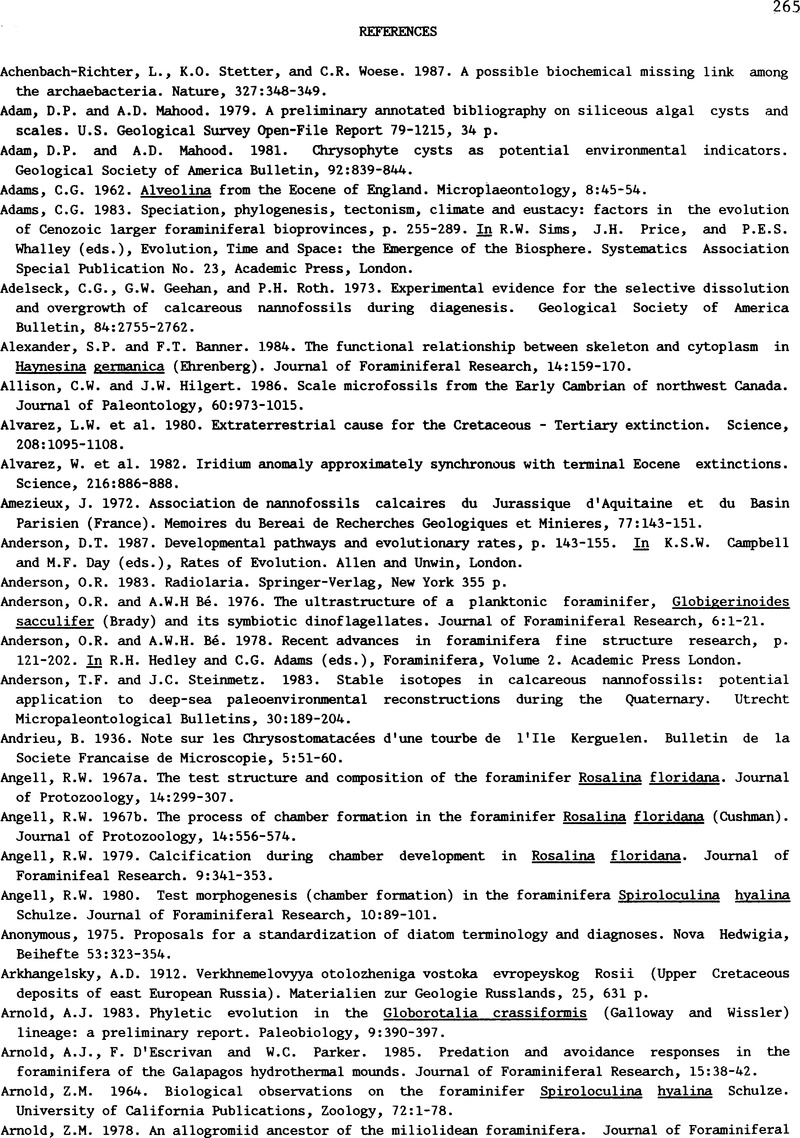No CrossRef data available.
Article contents
References
Published online by Cambridge University Press: 19 July 2017
Abstract

- Type
- Other
- Information
- Series in Geology, Notes for Short Course , Volume 18: Fossil Prokaryotes and Protists , 1987 , pp. 265 - 303
- Copyright
- Copyright © 1987 University of Tennessee, Knoxville


